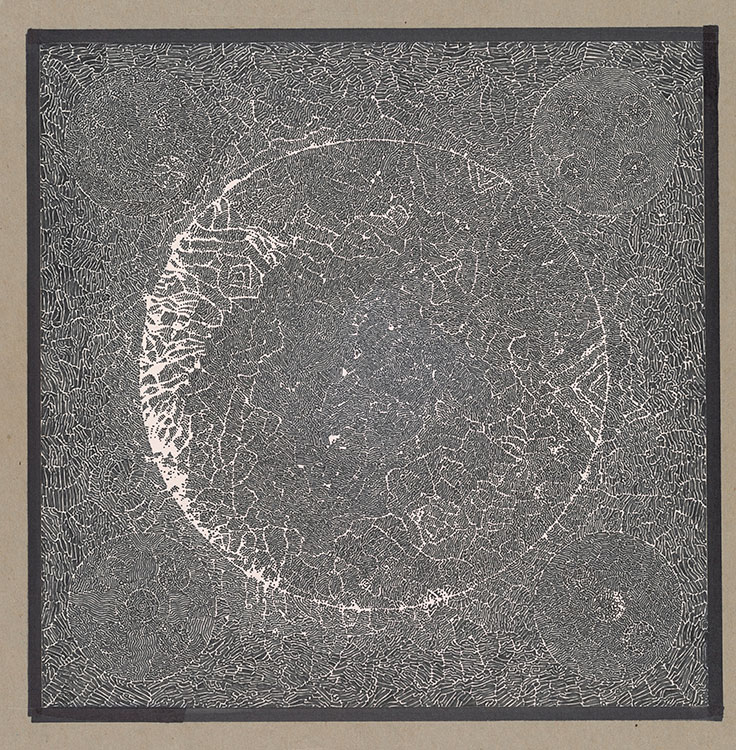
A major post-war American artist, Conner was active in San Francisco as a sculptor, draftsman, and filmmaker from the late 1950s on. His work in all mediums reveals a particular fascination with the contrast of black and white and with images of high visual density. Conner's drawings such as this sheet relate to his work as an experimental filmmaker. In them he explored persistence of vision---the optical phenomenon through which the eye perceives motion when it's actually watching a series of still photographs. “I work with the positive/negative image,” Conner explained. “One of the things that will happen is that movement appears to take place in the drawings ... where the positive and negative aspects of the line are so intimately related that they start to create patterns. ... The patterns that you see continue to change the longer you look at the drawing, and depending on how closely you look at the drawing.” He made these drawings after having discovered the then newly introduced Pentel felt-tip watercolor pen that allowed him to keep drawing for hours at a time without lifting pen from paper.
